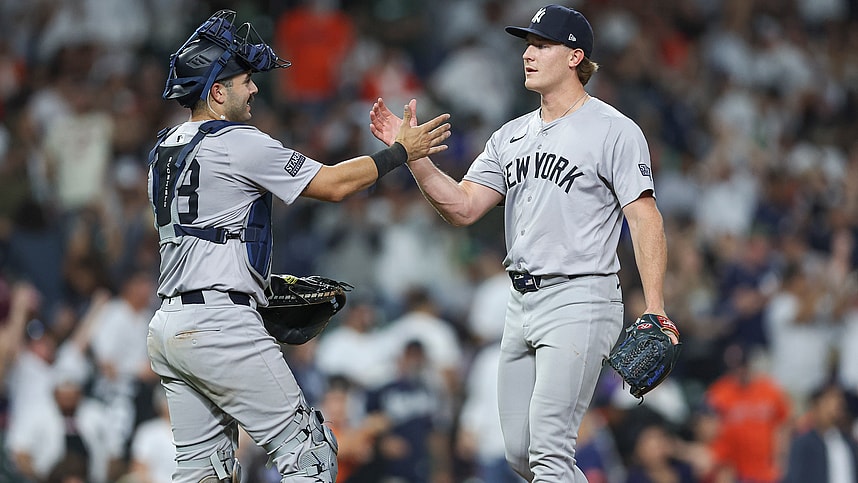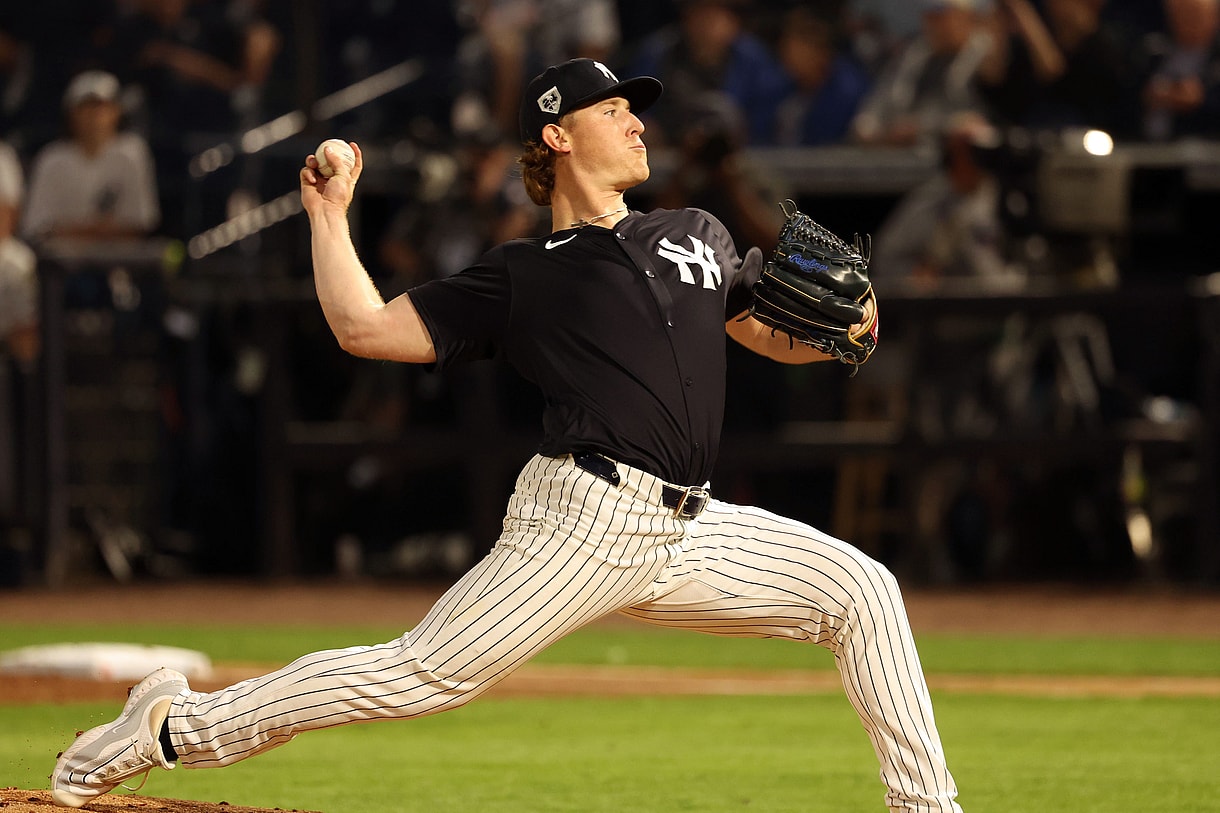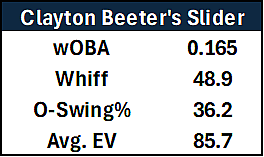
One of the biggest question marks for the Yankees right now pertains to how they’ll align their bullpen for the postseason. Whether it’s as American League East Champions or qualifiers for a Wild Card spot, it’s a foregone conclusion that the Bronx Bombers will make the postseason after missing it altogether in 2023. Mark Leiter Jr. and Enyel De Los Santos have not been adequate trade additions while Scott Effross hasn’t made much of an impact in his return, swiftly being demoted to Scranton after just two outings.
No one would expect Clayton Beeter to be in that conversation given his lengthy IL stint due to a shoulder injury that even Brian Cashman worried could have been season-ending. When talking to Greg Johnson of The Trentonian, the right-hander made an interesting comment about potentially being an option for the Yankees’ postseason roster.
Is this a rookie just showing their naivety, or should the Yankees seriously consider a late-season promotion to try and strengthen a depleted bullpen?
Clayton Beeter Could Be a Secret Weapon for the Yankees

The Yankees are searching for strikeout arms in their bullpen, and Clayton Beeter could be an obscure answer to that problem. Across seven starts in Triple-A this season, the right-hander struck out 32.8% of batters faced, and prior to his shoulder injury, he looked like the kind of pitcher who would inevitably get a mid-season promotion. The first thing that stands out in his profile is his wicked slider, a pitch that’s played up by his high release point thanks to his delivery, which has him very upright.
He really hinges into his back leg, tilting his trunk upward and creating a difficult angle for batters to pick up on a pitch with tons of vertical drop. Thanks to his unique delivery, a pitch that would grade out as more of a 55-60 on the 20-80 scale ends up being closer to a 65-70:

What also helps is that the Yankees helped him clean up the hitch he had in his delivery, opting for smoother mechanics that resulted in an uptick in fastball velocity. He averaged 94.1 MPH on his heater over the final month of the season last year, and he carried that into Spring Training as Beeter made the team out of camp and made one appearance in their opening series against the Houston Astros. We’ve also seen an uptick in vertical movement as he’s gotten used to the Triple-A baseballs, which more closely resemble the ones used at the Major League level.
His high release height makes the riding action less deceptive, but it works as a pitch that he can establish at the top of the zone to set up his nasty slider. We’ve also seen Clayton Beeter toy around with a curveball, which has more drop than this slider at a lower velocity, and it could be a good way to steal strikes early in counts or get chases against lefties, who he’s remedied a lot of his problems with. The former second-rounder is lethal against both left-handed and right-handed batters, and while I don’t know if he could make it as a starter due to his command, he could crush it as a reliever.
With a 16% Swinging Strike Rate and 32% Chase Rate, he’s capable of missing bats at a high rate, it’s just a matter of trying to be more consistent in his delivery. He’s only in-zone 43% of the time, whereas the average Triple-A pitcher is there roughly 48% of the time. Some pitchers operate better when they allow walks instead of damage contact, and in the case of Beeter, he pitches in a run environment that can only be described as challenging for pitchers. The average ERA in the International League is 5.15 this season, so his sub-3.00 ERA is even more impressive than you think.
READ MORE: Yankees might have seen the last of struggling infielder

He’s only worked in one rehab outing thus far, firing a scoreless frame with the Somerset Patriots where he allowed one hit but struck out two batters. Cody Poteet could be someone who gets a look before Clayton Beeter, but some of the expected veterans have not been impressive in their stuff or results since starting their rehab assignments. Lou Trivino’s velocity has taken a huge hit and the Yankees could look at Poteet as someone who’s better suited to wait in the wings in case a starter goes down.
Spring Training likely boosted his stock internally as well, with the right-hander showing enough promise to be their emergency long-relief arm if someone got in trouble. Hunter Brown and Cody Bradford are two recent examples of pitchers with limited big-leaguer experience who moved to the bullpen and become impact arms for their respective teams in October. Perhaps the Yankees would be taking a risk, but it could be one worth taking if the stuff is there and the need for arms exists.
More about: New York Yankees